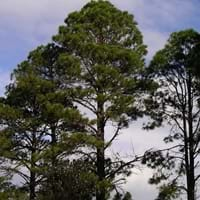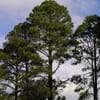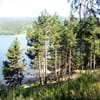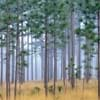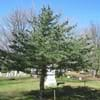Life Span
Perennial
Perennial
Type
Needled or Scaled Evergreen
Tree
Origin
Southeastern United States
Africa, South-Eastern Asia
Types
Pinus elliottii elliottii, Pinus elliottii densa
Not Available
Number of Varieties
Not Available
Habitat
Humid climates, Warm and moist climatic conditions
Subtropical forests, Tropical regions
USDA Hardiness Zone
8-11
5-9
Sunset Zone
Not Available
1a, 1b, 2a, 2b, 3a, 3b, 7, 8, 9, 10, 11, 14, 18, 19, 20, 21
Habit
Oval or Rounded
Clump-Forming
Flower Color
Yellow
Pale Yellow, Yellow green
Flower Color Modifier
Bicolor
Bicolor
Fruit Color
Brown
Green, Light Green
Leaf Color in Spring
Green
Green
Leaf Color in Summer
Green
Light Green
Leaf Color in Fall
Green
Green, Light Green
Leaf Color in Winter
Green
Brown, Light Yellow, Tan
Leaf Shape
Needle like
Oval
Plant Season
Spring, Summer, Fall, Winter
Summer, Fall, Winter
Sunlight
Full Sun
Full Sun
Type of Soil
Loam, Sand
Clay, Loam, Sand
The pH of Soil
Acidic, Neutral
Acidic, Neutral, Alkaline
Soil Drainage
Well drained
Average
Bloom Time
Not Available
Summer, Late Summer, Early Fall
Tolerances
Salt, Wet Site
Pollution, Drought, Salt
Where to Plant?
Ground
Ground
How to Plant?
Cuttings, Grafting, Layering, Seedlings
Seedlings, Stem Cutting
Plant Maintenance
Medium
Medium
Watering Requirements
occasional watering once established, Reduce water once established
Needs less watering
In Summer
Lots of watering
Lots of watering
In Spring
Moderate
Moderate
In Winter
Average Water
Average Water
Soil pH
Acidic, Neutral
Acidic, Neutral, Alkaline
Soil Type
Loam, Sand
Clay, Loam, Sand
Soil Drainage Capacity
Well drained
Average
Sun Exposure
Full Sun
Full Sun
Pruning
Remove damaged leaves, Remove dead branches, Remove dead leaves
A hard prune may be necessary if the plant becomes woody, Cut upper 1/3 section when young to enhancegrowth, Remove damaged leaves, Remove dead branches, Remove dead leaves
Fertilizers
All-Purpose Liquid Fertilizer
10-10-10 diluted liquid fertilizer, All-Purpose Liquid Fertilizer, Compost
Pests and Diseases
Annosus Root Rot, Rust, Scale insects
Aphids, Downy mildew, Purple Blotch, Red blotch
Plant Tolerance
Salt, Wet Site
Drought, Salt and Soil Compaction, Shade areas
Flower Petal Number
Single
Single
Foliage Texture
Fine
Fine
Foliage Sheen
Matte
Glossy
Attracts
Small mammals, Squirrels
Bees, Flies, pollinators
Allergy
Asthma, Skin irritation
conjunctivitis, sneezing
Aesthetic Uses
Not Used For Aesthetic Purpose
Not Used For Aesthetic Purpose
Beauty Benefits
Not Available
Making cosmetics, Not Available
Edible Uses
Not Available
Yes
Environmental Uses
Air purification, Shelter for wildlife
Air purification, Shadow Tree, Soil protection
Medicinal Uses
Chronic fatigue, Cold, gonorrhoea, Rheumatism
Cardiovascular problems, Detoxifies lever, Diabetes, Dysentry, Jaundice, Menstrual Disorders
Part of Plant Used
Bark, Fruits
Inner Bark, Leaf Stalks
Other Uses
Paper pulp, Used as Ornamental plant, Used in construction, Used in pulpwood and lumber production, Wood is used in construction
Can be made into a herbal tea, Oil is used for aromatherapy, Used as a fodder tree in agricultural areas
Used As Indoor Plant
No
No
Used As Outdoor Plant
Yes
Yes
Garden Design
Not Available
Dried Flower/Everlasting, Lawns and Turf, Mixed Border, Wildflower
Botanical Name
Pinus elliottii
Terminalia arjuna
Common Name
slash pine
Arjuna
In Hindi
स्लेश पाइन
अर्जुन वृक्ष
In German
Schrägstrich Kiefer
Terminalia arjuna
In French
slash pine
Terminalia arjuna
In Spanish
pino slash
Migdałecznik arjuna
In Greek
κάθετο πεύκης
arjuna
In Portuguese
pinho barra
Migdałecznik arjuna
In Polish
sosny ukośnik
Migdałecznik arjuna
In Latin
VULNUS pinus
arjuna
Phylum
Coniferophyta
Magnoliophyta
Class
Pinopsida
Not Available
Clade
Not Available
Angiosperms, Eudicots, Rosids
Tribe
Not Available
Not Available
Subfamily
Not Available
Not Available
Season and Care of Slash Pine and Arjuna Tree
Season and care of Slash Pine and Arjuna Tree is important to know. While considering everything about Slash Pine and Arjuna Tree Care, growing season is an essential factor. Slash Pine season is Spring, Summer, Fall and Winter and Arjuna Tree season is Spring, Summer, Fall and Winter. The type of soil for Slash Pine is Loam, Sand and for Arjuna Tree is Clay, Loam, Sand while the PH of soil for Slash Pine is Acidic, Neutral and for Arjuna Tree is Acidic, Neutral, Alkaline.
Slash Pine and Arjuna Tree Physical Information
Slash Pine and Arjuna Tree physical information is very important for comparison. Slash Pine height is 2,290.00 cm and width 1,070.00 cm whereas Arjuna Tree height is 300.00 cm and width 45.70 cm. The color specification of Slash Pine and Arjuna Tree are as follows:
Slash Pine flower color: Yellow
Slash Pine leaf color: Green
Arjuna Tree flower color: Pale Yellow and Yellow green
- Arjuna Tree leaf color: Green
Care of Slash Pine and Arjuna Tree
Care of Slash Pine and Arjuna Tree include pruning, fertilizers, watering etc. Slash Pine pruning is done Remove damaged leaves, Remove dead branches and Remove dead leaves and Arjuna Tree pruning is done A hard prune may be necessary if the plant becomes woody, Cut upper 1/3 section when young to enhancegrowth, Remove damaged leaves, Remove dead branches and Remove dead leaves. In summer Slash Pine needs Lots of watering and in winter, it needs Average Water. Whereas, in summer Arjuna Tree needs Lots of watering and in winter, it needs Average Water.
